We occasionally link to goods offered by vendors to help the reader find relevant products. Some of these may be affiliate based, meaning we earn small commissions (at no additional cost to you) if items are purchased. Here is more about what we do.
Does cheese seem like a mystical ingredient that takes some sort of wizardry to produce?
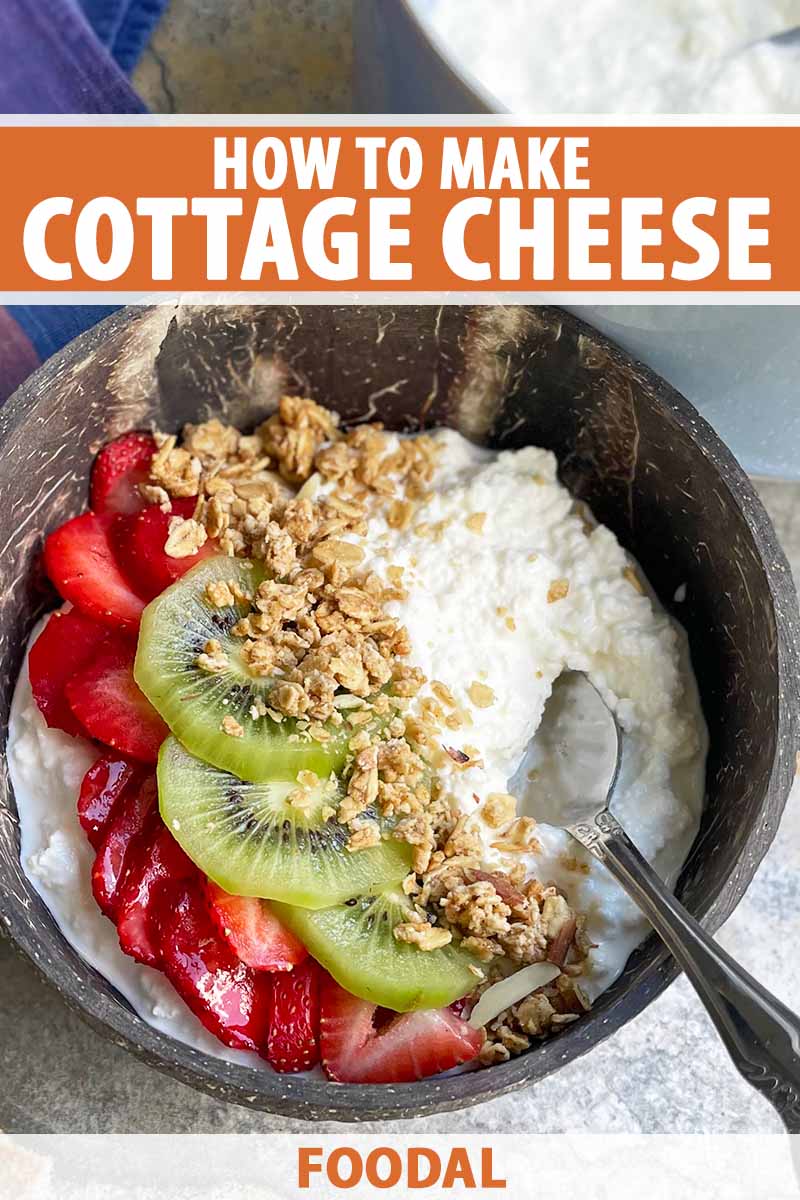
Good news – it’s not that complicated. Cottage cheese is an excellent place to start when approaching unfamiliar territory, and you can make a batch appear before your very eyes with just three ingredients, and not a magic wand in sight.
You’ll be surprised to discover what a breeze it can be to manifest fresh, fluffy clouds of curds in your own kitchen.
Compared to other varieties and formats, fresh cheese is quick and easy to make at home – especially cottage cheese!
Why is it so fast to make? Let’s dig a little deeper into some basic cheesemaking…
There are two main ways to coagulate the milk for cheese production. Coagulation, the process of separating the curds and the whey, is achieved by using added enzymes or acids.
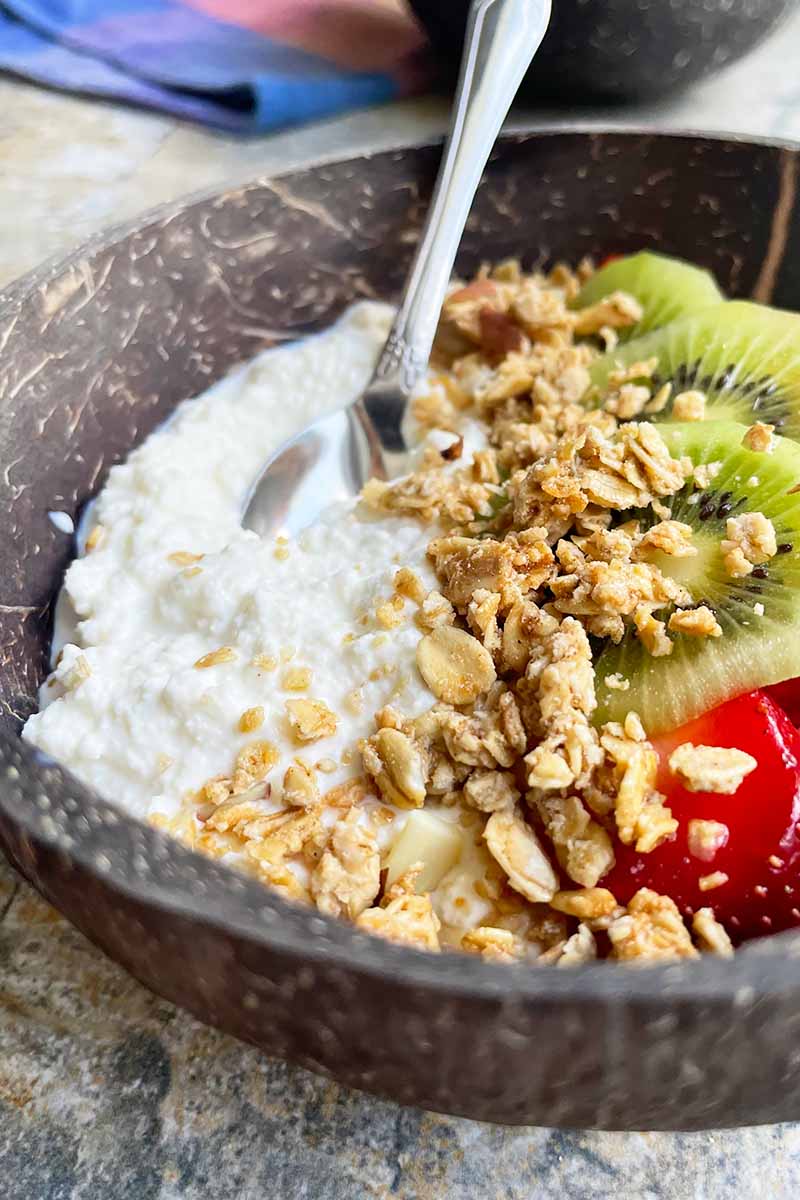
Many cheeses are produced with enzymes, traditionally rennet, to separate the solids (curds) from the liquids (whey) in the milk.
Enzymatic coagulation gradually separates the solids from the liquids in the milk over a long period of time at a low heat setting. Depending on the cheese you’re making, the process may take hours.
Instead of using enzymes like rennet derived from animals, quick cottage cheese can be produced by heating milk to a higher temperature, and mixing a strongly acidic liquid like vinegar or citrus juice into the milk.
This process is much faster, and requires just 30 minutes of down time to allow the curds and whey to separate, about 20 minutes to drain, and some time to chill in the refrigerator.
And unlike aged varieties that need anywhere from a few weeks to a few years to ripen, cottage cheese is ready the day you make it, and should be consumed fresh within a week!
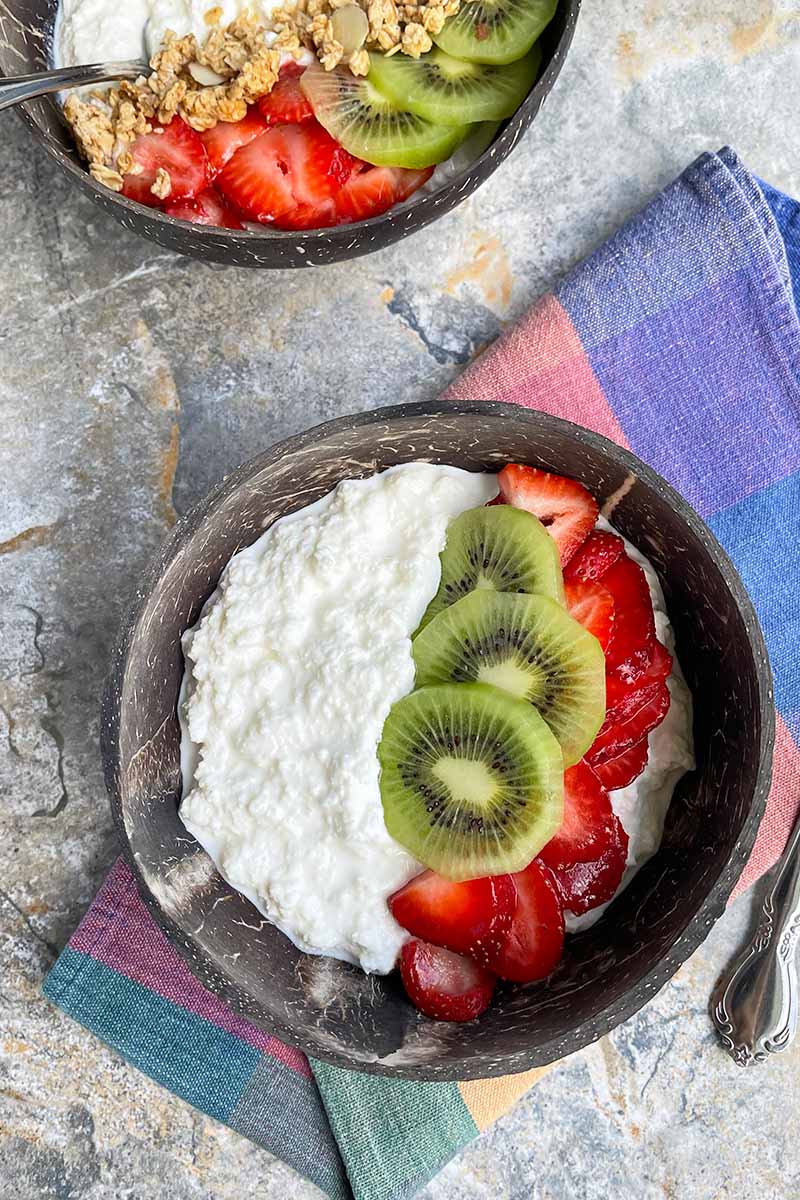
Let’s talk more about the milk you’ll be using to make the cottage cheese.
Make sure you reach for a gallon at the grocery store that isn’t labeled “ultra-pasteurized.” Although milk with a longer shelf life is a plus if you’re pairing it with a family-size box of cereal, it’s not recommended for cheesemaking.
The extended heating period used to process ultra-pasteurized milk destabilizes the proteins – which means they won’t be able to properly form curds.
Solid, well-formed curds are essential in the land of homemade cottage cheese.
Once you’ve stepped foot into that world, the fun part is figuring out all the ways to devour your finished product. You’ll have a little time to daydream while it separates, drains, and chills.
I love a bowlful topped with freshly sliced kiwi, strawberries, and granola, but you can sneak this milky ingredient into many different recipes.
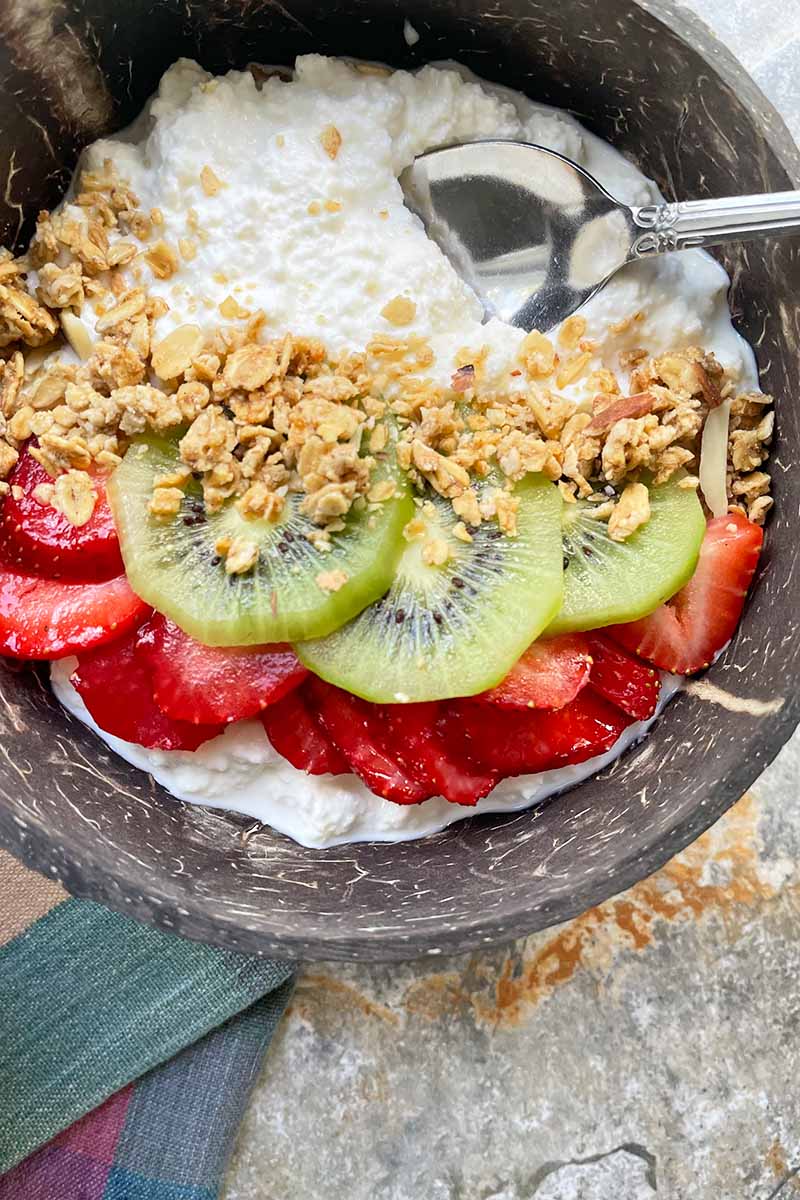
Looking to lighten up dessert? It’s the secret ingredient in this airy cheesecake.
If a savory dish is what you desire, partner it with feta in this Italian-inspired chicken sausage and veggie pasta bake.
It also works like a charm in khachapuri – a hearty Georgian cheese bread.
We have even more recipe ideas for you below, so keep reading!
Now, it’s time to take the cheesemaking bull by the horns and master it, step by step.
You may not need a magic wand or fancy spell to make cottage cheese, but you’re certainly welcome to wave your thermometer over the pot and shout something funny.
How to Make Your Own Cottage Cheese
And here we are!
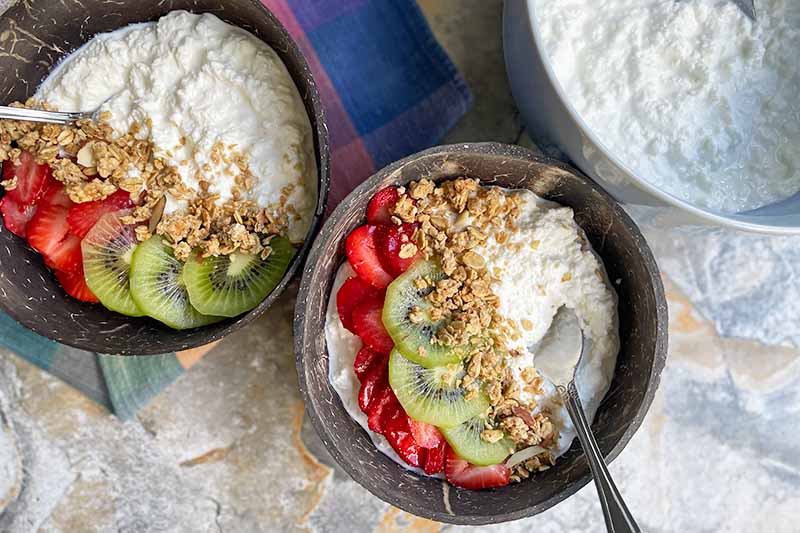
All you need are three simple ingredients to make this fresh, homemade cottage cheese. It’s light, fluffy, and endlessly enjoyable.
I suggest you review each step carefully before diving in, so there are zero surprises while you’re standing over the stove.
Cooking By the Numbers…
Step 1 – Gather and Measure Ingredients
To begin, set out all of the tools and equipment you will need:
- Large heavy-bottomed saucepot with lid
- Heatproof whisk or spatula
- Slotted spoon
- Thermometer
- Strainer or colander
- Cheesecloth
- Large mixing bowl
- Airtight container with lid
After gathering your tools, measure the following ingredients:
- 1 gallon whole milk
- 3/4 cup white vinegar
- 1 teaspoon kosher salt, or to taste
- 1/4-1/2 cup heavy cream (optional)
A gallon of milk will yield about 2 cups of cottage cheese, or 4 servings.
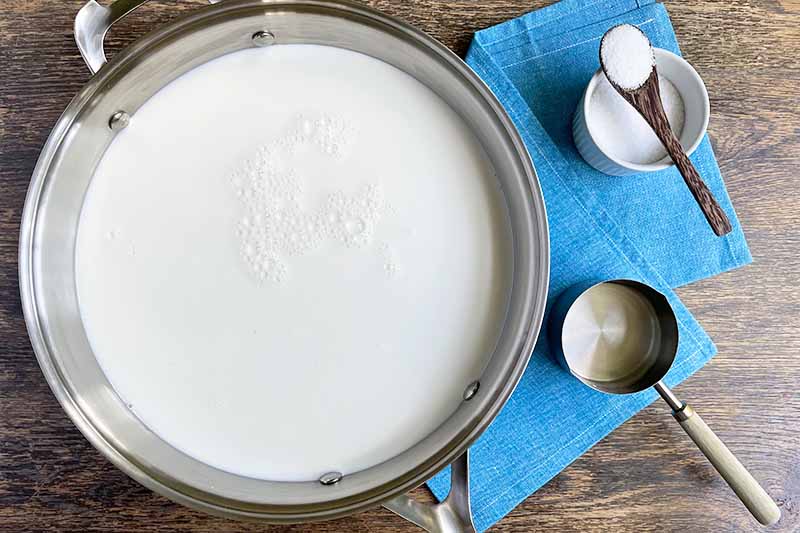
You could also use the same quantity of freshly squeezed lemon juice instead of vinegar.
The salt adds flavor and serves as the only mild preservative in this recipe, as opposed to store-bought cottage cheese which may contain chemical additives like potassium sorbate.
Keep the heavy cream covered in the fridge since it won’t be added until you’re ready to serve the cottage cheese. This is an optional addition that adds a creamy touch to the finished product.
Step 2 – Heat the Milk
Place a heavy-bottomed saucepot that can hold a full gallon of milk on the stove, with room to spare. I opted to use a 5-quart stock pot. Pour the milk into the pot and turn the heat to medium.
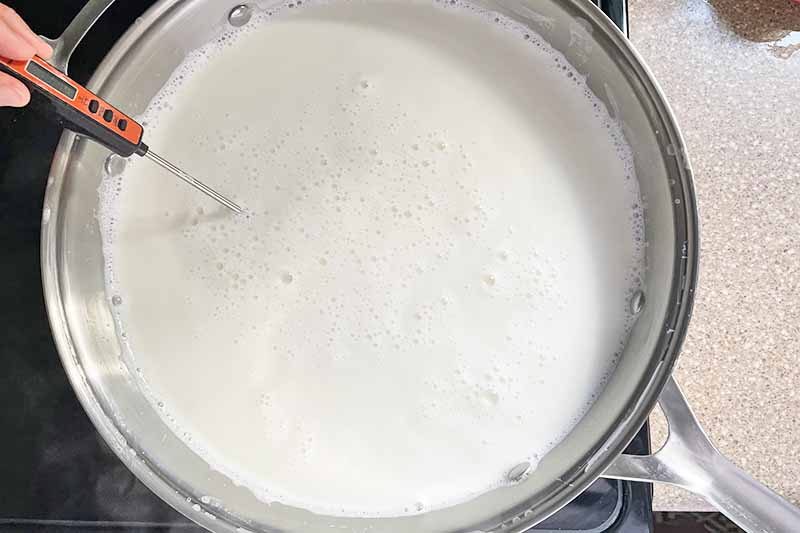
Stirring frequently to make sure the milk doesn’t scorch on the bottom of the pan, cook until small bubbles begin to form on the surface and the temperature is between 170 and 175°F. This will take about 10 to 12 minutes.
Immediately remove the pot from the heat once the milk comes to temperature. If you remove it before it reaches 175°F it may not curdle, but you want to avoid overheating it as well.
Step 3 – Add the Vinegar and Rest
While slowly pouring in a thin stream, immediately stir in the vinegar. Continue gently stirring for about 1 to 2 minutes until you begin to see the whey separate from the curds.
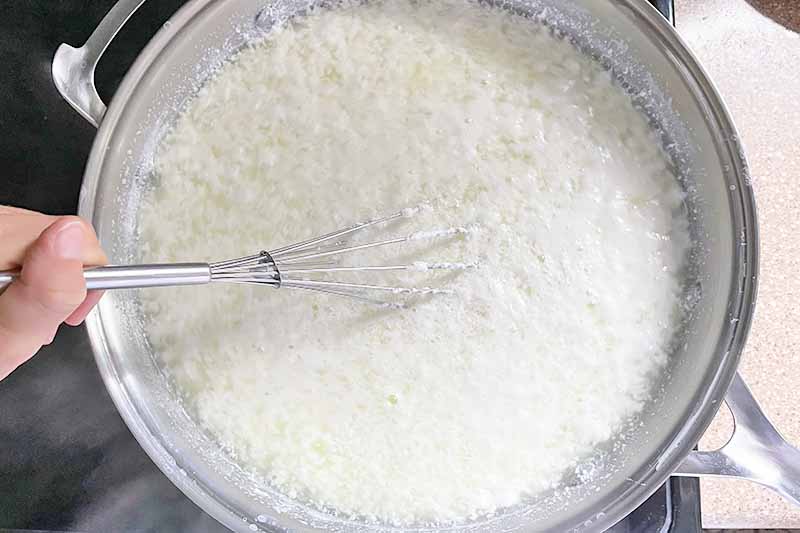
Place a lid on the pot and allow it to rest at room temperature, completely undisturbed, for 30 minutes.
Step 4 – Drain
Working next to the sink, line a large colander or fine mesh strainer with a few layers of cheesecloth. Place the strainer over a large bowl.
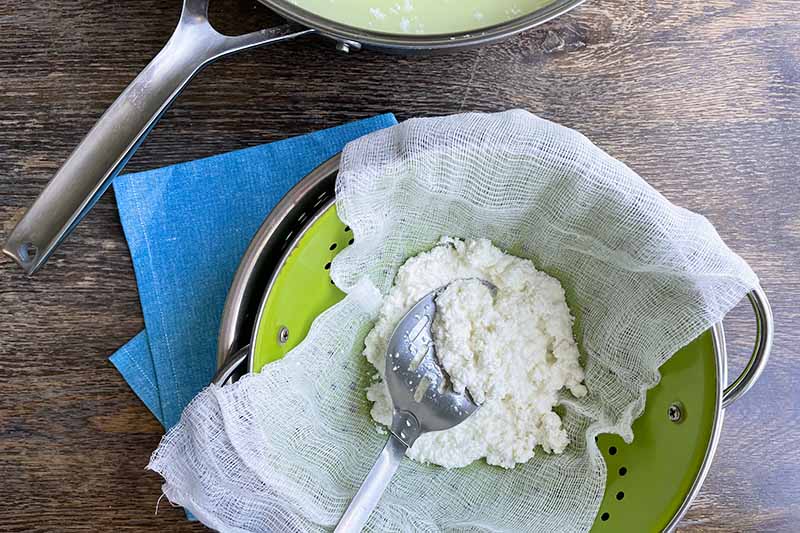
The bowl will catch the remaining whey as the curds drain, which you can reserve for another use if you like the flavor.
If your colander or strainer has feet and can stand on its own, you can drain the cottage cheese directly into the sink instead if you prefer to discard the whey.
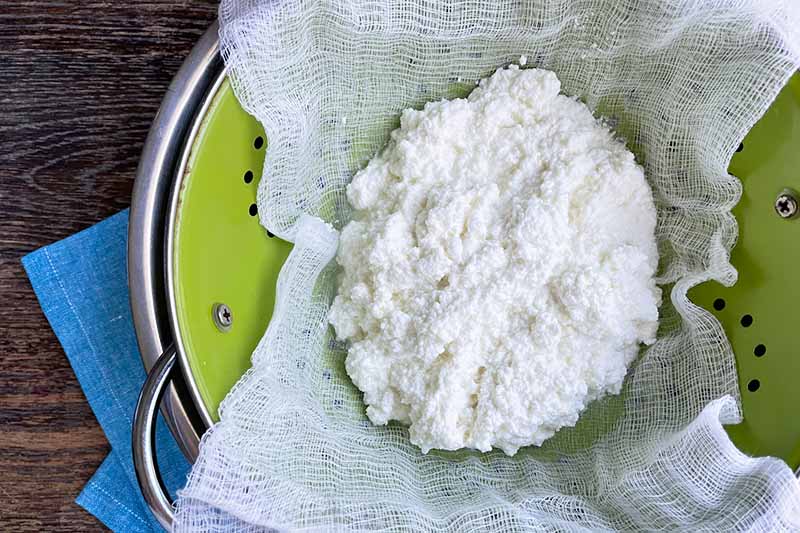
Using a slotted spoon, transfer the curds to the cloth and leave them to drain until the dripping stops. This will take about 20 to 25 minutes.
Step 5 – Rinse, Salt, and Break up the Curds
Turn on the faucet so you can rinse the curds under a steady stream of cold water.
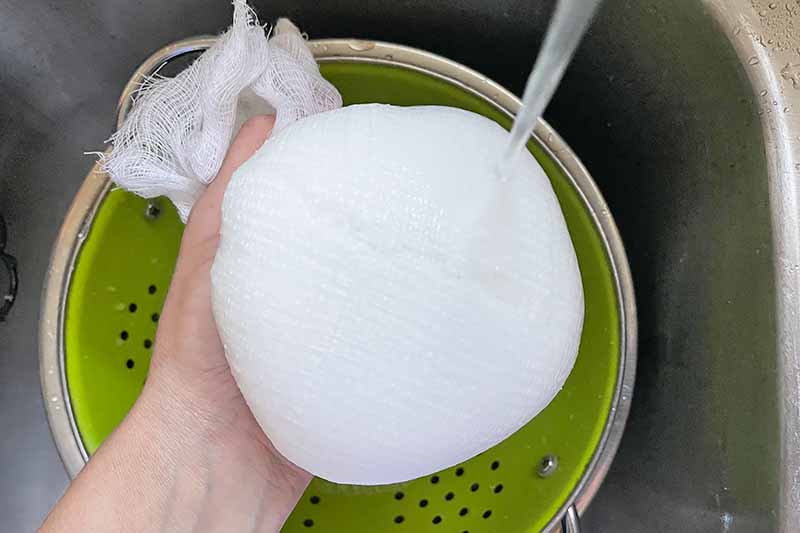
Gathering the corners, lift the cheesecloth containing the drained curds out of the colander. Twist the cloth at the top to form a tight ball, using one hand to hold the twisted top of the cloth and the other to hold the collected curds at the bottom.
Rinse the ball of curds under the cold running water, gently squeezing and kneading them until cooled completely, for about 3 to 5 minutes.
Thoroughly rinsing the curds washes out any residual lactic acid developed by the vinegar, resulting in a mild flavor that isn’t too acidic.
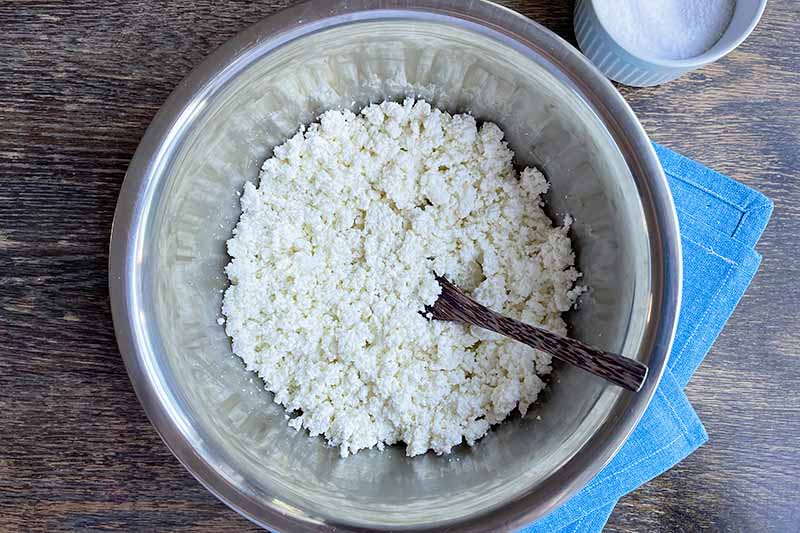
Tightly squeeze the ball one last time to remove any excess water.
Dump the curds into a large mixing bowl. Stir in the salt, breaking up the curds to your desired size as you stir. Salt can be added to taste, if you prefer to use less.
Step 6 – Chill and Serve
Transfer the cottage cheese to an airtight container with a lid and chill for a minimum of 1 hour.
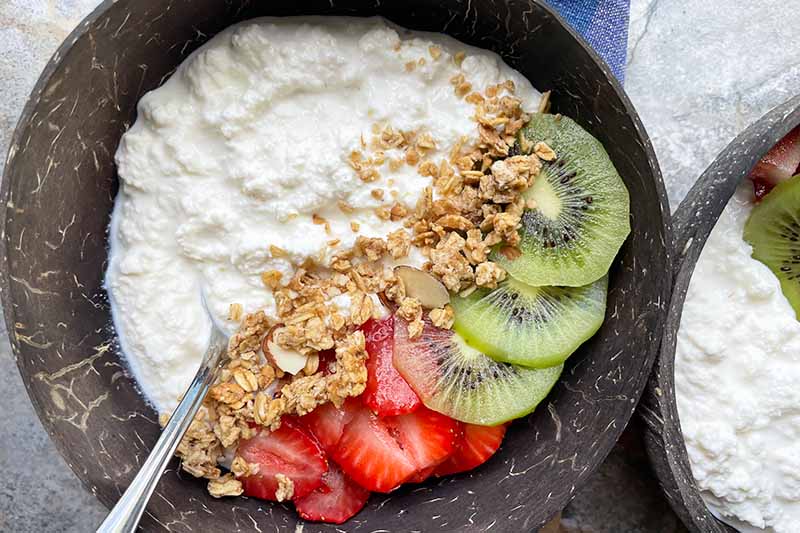
For an extra rich and creamy consistency when you’re ready to serve, stir in the heavy cream, or add 1 to 2 tablespoons of cream per half-cup serving.
You can also use half-and-half or milk for a lower fat option, or skip the added dairy if you prefer.
Store any leftovers in the fridge for up to 1 week. Serve chilled, or use it in recipes. Here are a few more suggestions to get you started:
- Add cottage cheese to your pancake batter
- Swap it with the mozzarella in your baked ziti
- Blend it into smoothies
- Whip it and fold in cut fruit, jam, and cream for a mousse-like dessert
- Add it to chicken salad
No Whey. Whey!
I’m going to be frank – whether or not you decide to use the whey is totally up to you.
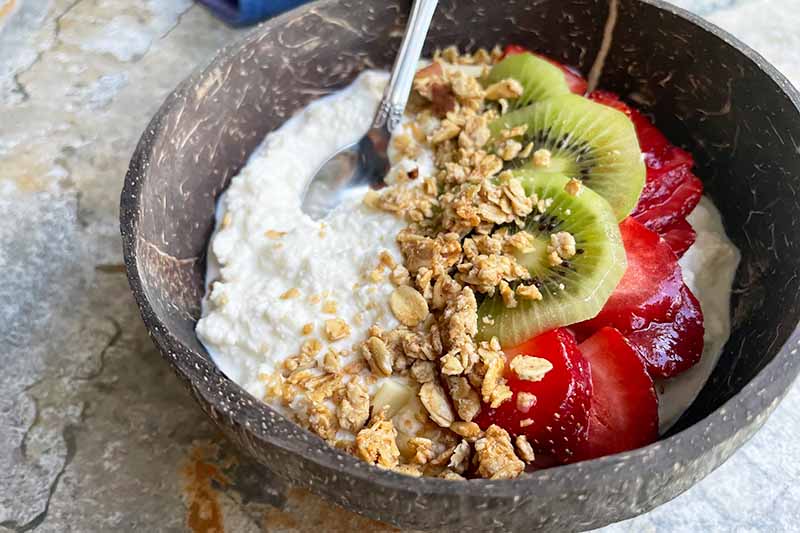
And you can still be Garth, even if you opt to discard this totally amazing, excellent ingredient.
When you’re ready to separate the curds from the whey, you’ve reached a pinnacle of cheesemaking:
Discard or keep that tangy liquid?
Whey is actually a treasured source of nutrition that’s packed with protein, but gallons and gallons of it are commonly tossed out as a byproduct of cheesemaking.
Keep in mind that ours is separated from the curds with vinegar, so while the flavor may be too pungent to cheerfully sip through a straw, adding a dash to a homemade salad dressing or soup is a great way to boost the protein content while adding a touch of tanginess.
According to the “Oxford Companion to Food,” “Almost a third of the proteins in milk are left in the whey, as well as all the sugar.” For more fun facts, you can find this comprehensive compendium of all things food on Amazon.
No matter which whey you decide to go, all roads lead down a path of homemade deliciousness!
Will you find a new home for your whey? Are you excited to try an unfamiliar cooking technique? Share your creative repurposing ideas in the comments below!
If cheesemaking seems like a cinch once you’ve got this one under your belt, tackle these how-to guides next:
- How to Buy and Prepare Brie for a Holiday Party
- How to Cook Chicken in the Electric Pressure Cooker
- How to Use Each Side of a Box Grater
Photos by Fanny Slater, © Ask the Experts, LLC. ALL RIGHTS RESERVED. See our TOS for more details. Originally published on September 7, 2014. Last updated on August 23, 2022. With additional writing and editing by Nikki Cervone and Allison Sidhu.
About Fanny Slater
Fanny Slater is a home-taught food enthusiast based in Wilmington, North Carolina who won the “Rachael Ray Show” Great American Cookbook Competition in 2014, and published her cookbook “Orange, Lavender & Figs” in 2016. Fanny is a food and beverage writer, recipe developer, and social media influencer. She was a co-host on the Food Network series “Kitchen Sink,” was featured on Cooking Channel’s longtime popular series “The Best Thing I Ever Ate,” and continues to appear regularly on the “Rachael Ray Show.”

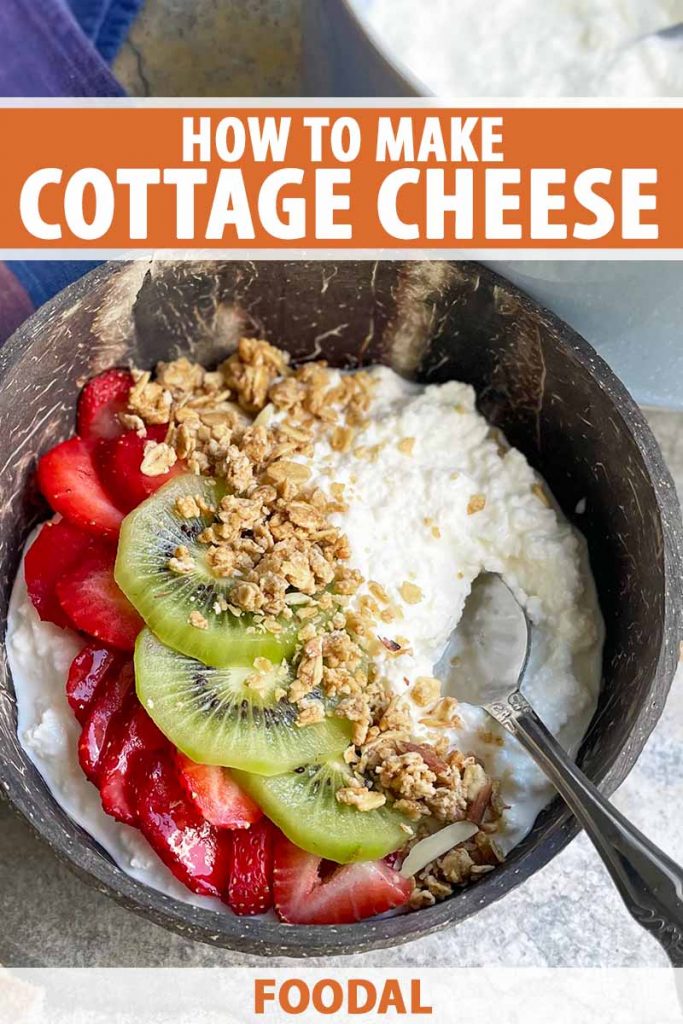

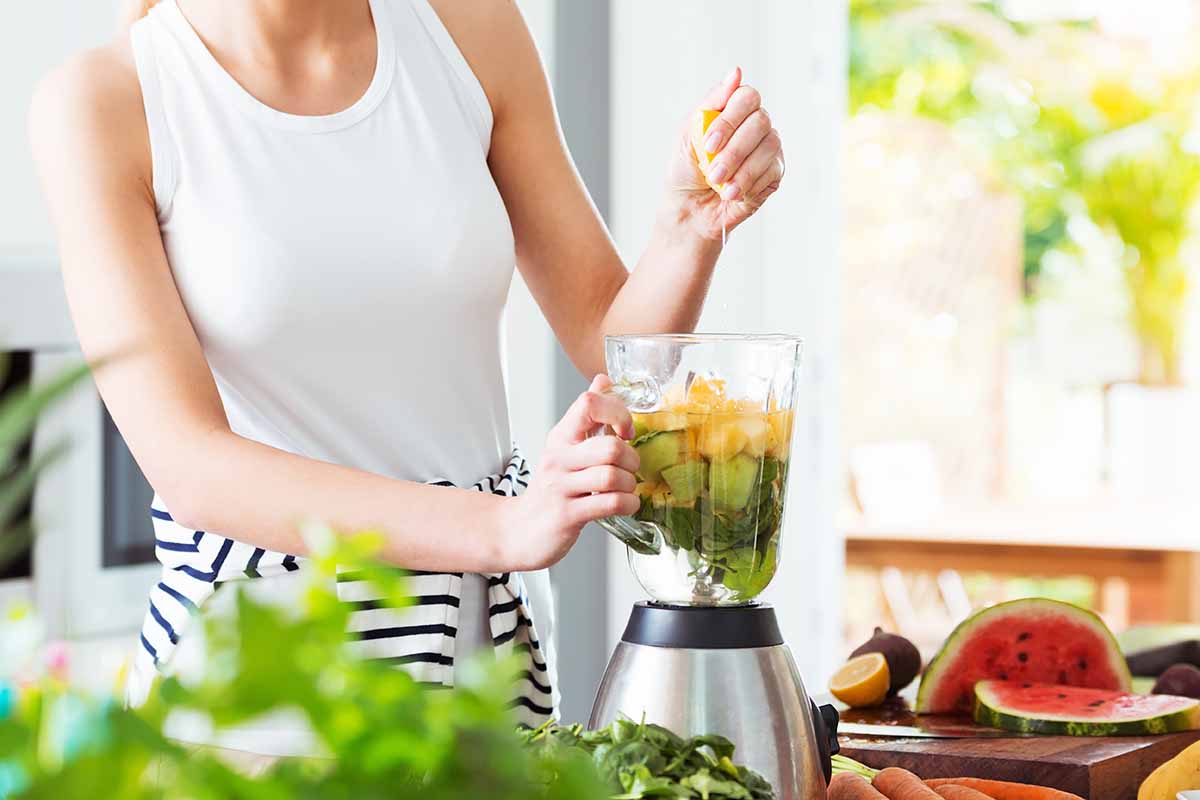

I have always enjoyed cottage cheese with fresh fruit on the side as a healthy snack. It reminds me of my childhood. I had no idea making it was so simple! I’ll have to try it soon. I also like the idea of using it in ziti for a healthier recipe. The photograph of your dish made my mouth water 🙂
Honestly, I don’t think I could make my own cottage cheese, however I like the idea of the pancakes as they look healthy.
I love creamy pasta sauces and hadn’t though of using cottage cheese instead of cheese in the sauce or instead of ricotta for lasagna so will try it next time I make it.
Lynn, I like to use Cottage Cheese in place of mayo or cream cheese. I am wild about the large curds, they are like miniature pillows in my mouth. :)) The bonus recipes are like gems and a stretch of a good imagination. I have to try the Pancakes for Sunday breakfast, oh my, yum! lol Thanks, Lynn.
Yum. How creative to make your own ingredient for your own recipe. Good thinking and I’m looking forward to try it!
The cottage cheese breakfast blend looks yummy…despite my peculiar reservations in regard to cheese, but like i said earlier, the more i read, the more am enticed in trying out at least 2- 3 of the recipes given above :)..and i should, i definitely should.
I saw this documentary on youtube {i won’t share it here}…not for the light-hearted, in regard to a specific kind of cheese {Casu Marzu} Google it… i happened to share the same documentary on a certain forum, i wanted to read of people’s unique views in that regard and someone said that all cheeses contain {my, am trying to be gentle here}…whatever is found in that specific cheese, my question is, is this true {worried look}?…why i ask here, is because this is a website dealing with food and knows a lot, in all matters food and somehow will calm my worst fears in that regard 🙂 kindly tell me that is a phony theory?
It never even occurred to me to make my own cottage cheese. I think it will be fun to try. I love pasta, so whether I use my own homemade or store bought cottage cheese, I am definitely going to try that baked ziti.
Me too Nids. I cannot wait to try these recipes, I just hope I get time this weekend. I really love the textures of the cheese and curds.
I think the same recipe can be used to make ricotta, but you just let it sit in a mould or bowl to shape it into ricotta rather than break the curds up. Interesting idea though, I’ve never tried cottage cheese so this would probably be the way to go for when I want to try it.
I never knew you could do so much with cottage cheese! I’d love to try making my own too. The pancakes look amazing, and I’m definitely going to try these, as well as the mousse and the smoothie.
Putting cottage cheese into a pasta dish is new to me too; although I have just recently learned that milk and cream can really transform a spaghetti sauce. I love learning about all of these new things,
Great ideas, Lynne.
I must say that cottage cheese mousse looks amazing, i know i should be getting around to give back feedback in this regard but am yet to try out this recipes…i was just nosing around again…:), my ugly reservations about cheese have been cancelled out completely 😉
I have made protein pudding with cottage cheese. It doesn’t sound appetizing, but it is really simple. Using any pudding mix packet, prepare it like you normally would, only add a 1/2 cup of cottage cheese and mix it all up in the blender. Then let it set in the fridge. I thought maybe I could freeze it like ice cream. It gets kind of hard, but it’s not too bad.
I had no idea that cottage cheese was so simple to make. I thought that it would take hours and reuqire some specialist equipment. I like cottage cheese on a plain old jacket potato, not only is is a great diet meal but it;s also very frugal too. I might give this a try!
I remember the first time I made cottage cheese like this. My mum was like, AMAZED lol. I’ve never tried to make cottage cheese pancakes or that yummy looking mousse though. Will definitely try this ASAP. Thanks for the great post.
You can do that? Who knew you could make your own cottage cheese? Not me. It sounds so easy too!
Well, here’s another one that I’m going to have to try. I pride myself on making homemade sauces, dips, salad dressings, and other stuff, but I think homemade cottage cheese is pretty impressive. I bet it tastes so fresh and delicious.
Another one to share with my daughter as well. Thanks!
I am so excited, I LOVE cottage cheese! But unfortunately sometimes I can’t really justify spending the money at a supermarket to buy a small tub of cottage cheese that I’m just going to finish in like 2 days. Plus, like you said, cottage cheese can go with anything and is just good on its own as well!
I wonder if you can add food coloring to the cottage cheese during the making process to make it a little more colorful 😛 You know, for little kids who loves color in their food?
I’m the only one in my house (now) that eats it, so I don’t buy it much either. My oldest daughter likes it too, but she’s grown and married. She makes a lot of stuff from scratch, so I know she’ll like this.
It’s going to be a perfect snack for me, since I’m trying to eat a bit healthier.
If you want color, I’d try the recipe with fruit. Kids would like the fruit too and it gives it a nice color.
Never considered making my own & seriously was unaware of how simple this is to do. How much does it end up making after all is said & done? Also, should I make any alterations to the salt if I double the recipe?
I have always loved cottage cheese with just salt and pepper. In recent years, I have started to enjoy eating it with all types of fruit, such as pineapple, strawberries, mango and peaches. I never knew how versatile it could be, although a friend told me that she replaces the Ricotta in her lasagna with it. I can’t wait to try making my own, and applying it to some of these awesome recipes!
I must say, I had no idea it was so easy to make cottage cheese, let alone, that I could make it at home with so few ingredients. I’ve always loved cottage cheese, and had never heard of it being used other than as a side dish, so I was surprised when a co-worker shared a recipe for lasagna made with cottage cheese. We’ve always used ricotta, which I also love, so it had never occurred to me to swap them out, or to use cottage cheese as a stuffing or ingredient. This is definitely something I want to try, so I’m going to look into buying some cheesecloth, for my first attempt. Your pancakes and baked ziti recipes also look yummy.
The cottage cheese mousse looks stunningly gorgeous; I would’ve never thought to make something like that out of cottage cheese. As I typically don’t like pancakes in the morning (the syrup being too sweet for me), I think I might try the breakfast blend instead. I never realized that cottage cheese could be used in so many different ways; typically, my family only buys the cottage cheese because we heard that it is healthy for our dog. I’ll consider making my own now for human consumption. 🙂
Do you think this would be possible with lactose-free milk? I have seen lactose-free milk mozzarella recipes. Some good looking recipes here, would never had thought to put cottage cheese in a smoothie.
I have eaten this cheese with cantaloupe. Im not sure how many other people are into that kind of thing.This is also really good in a lasagne. Who would have thought of making pancakes using cottage cheese? The best part is how versatile this cheese is. Savory or sweet, it is good to eat.
Wow 4 ingredients? That’s all! I have always loved cottage cheese, but unfortunately haven’t had it in a long time. I really like this site. I’m not creative at all with making and cooking things so this site really helps me with what I should make and try. I’ll be trying this one for sure!
What I like about this post is that I have learned how to make cottage cheese. I find this post empowering, knowing that I can prepare it using basic ingredients. You see, I’ve always considered cottage cheese a luxury food item. Now that I know the steps and the ingredients needed to prepare this super food, there’s definitely no excuse not to enjoy it.
Aside from peanut butter, cottage cheese is indeed a valuable protein source. These recipes will definitely spice up any healthy eater’s meals. Thanks for this!
I’ve always liked how fluffy and light cottage cheese is. I like to think of cottage and ricotta as closer to a nutty yogurt than actual cheese. I can do without the water liquid that separates from the nuggets though. I never know what to do with it and always end up with a container of about 2 cups worth of cloudy liquid when I’m done eating. I’ve never considered adding it in a dish or anything because the thought of doing so puts me off. I don’t like liquids that aren’t clear. I can’t wait to make the recipe; it pairs so well with quiche and strawberries. The mousse also looks yummy. If only I didn’t have to use vinegar to make it, looks like I’ll be facing off against my sworn nemesis again!
I like cottage cheese, but I have always been weary of trying to make it myself. This article does make it easier than I had previously thought though. I wonder, does it taste the same or am I going to be put off by a difference?
The simplicity makes me wonder how come it’s so expensive in our local supermarket… Well, everything there’s expensive anyway -_-
Anyway, may I ask what’s “half and half” referring to? Is it the cream? How is it “half and half”? Sorry, I just got lost :/
Thanks for the recipe(s) though!
I never knew that you an even make cottage cheese yourself! Wow!
I definitely like the different recipes that you can use to include it, such as the pancakes and the cream.
Amazing!
THis is absolutely amazing. I am discovering so much that I never even suspected you could do at home. Some of these things I just assumed were either impossible or too hard to make at home and it’s so exciting to know that it’s actually way simpler than I could have hoped to create my own cottage cheese.
I forgot all about this, until I went to pick up some the other day. Then, I thought, I need to find this page again. I still want to try this. I can just imagine how fresh, and creamy, and good this would be. You can’t tell that I’m hungry right now, can you? ha ha. Yeah, I may have skipped breakfast and lunch, inadvertently, but now it’s time to eat.
I am also going to make a dish like the pasta one shown here, but with zucchini instead of the pasta. I have a bit of leftover spaghetti sauce to try it out with. Yum.
I’ve never even thought about the possibility of making my own cottage cheese before so it was really shocking to see how easy it is! I love the recipes that you included in the post too. They’re always ways that I never even considered using cottage cheese. I’m one of those types of people who usually just eat it plain with salt and pepper so actually cooking with it has never crossed my mind. I’m going to try to make the breakfast blend in the morning and see how it goes!